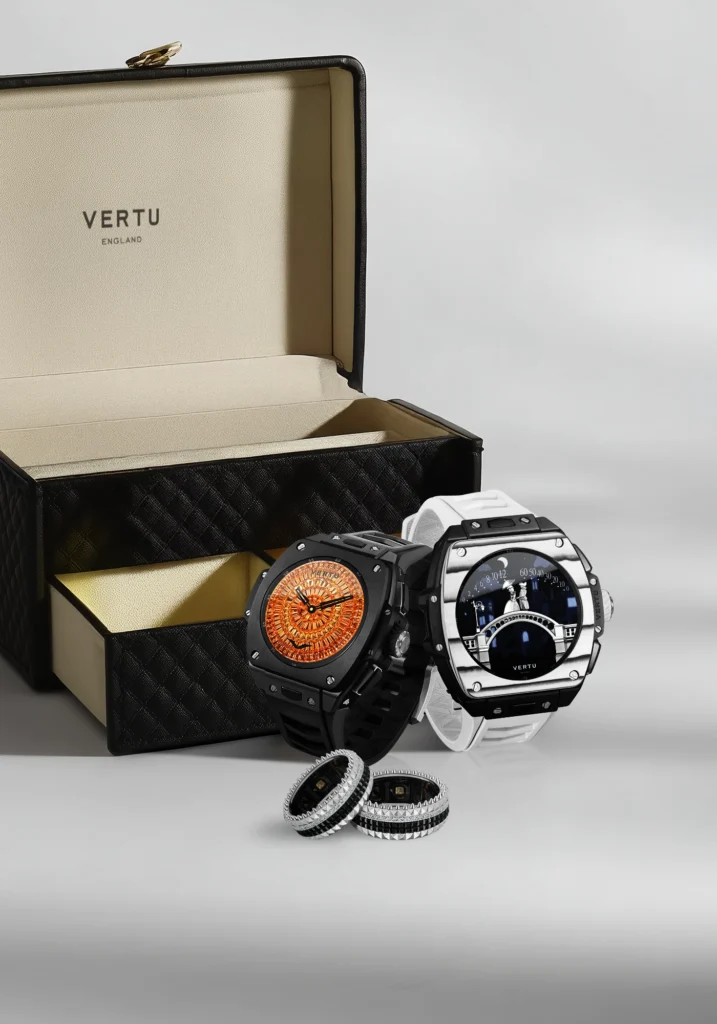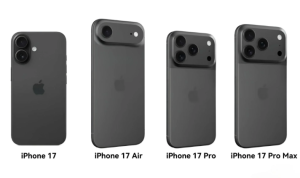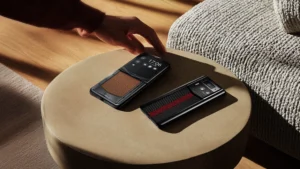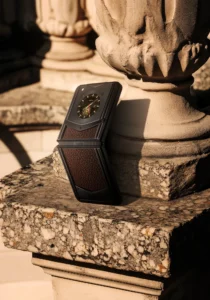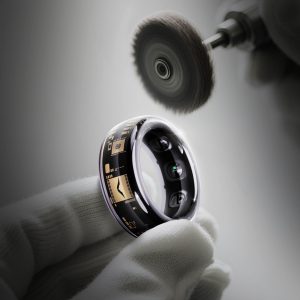Struggling to keep up with the latest tech trends? Wondering which wearable brands will truly impact your life in 2025?
What You'll Learn:
- Key trends shaping the wearable market in 2025.
- The top premium and budget-friendly wearable brands to watch.
- A practical framework for selecting the best wearable for your needs.
- Insights into the future trajectory of wearable technology.
Why Wearable Brands Matter in 2025
In 2025, wearable technology has moved beyond novelty and become an integral part of daily life for millions. These devices are no longer just fitness trackers; they are sophisticated personal assistants, health monitors, and communication hubs. The brands that can effectively integrate advanced functionality with user-centric design are the ones poised for dominance. Understanding which brands are leading the pack is crucial for consumers looking to make informed purchasing decisions and for businesses seeking to stay ahead of the curve.
Current Market Trends
The wearable market in 2025 is characterized by several key trends:
- Health and Wellness Focus: Wearables are increasingly sophisticated in their ability to monitor vital signs, detect anomalies, and provide personalized health insights. Features like advanced sleep tracking, stress monitoring, and even non-invasive glucose monitoring are becoming more common.
- Seamless Integration: Devices are expected to integrate effortlessly with existing smart home ecosystems and other personal devices. This means better compatibility, faster data syncing, and a more unified digital experience.
- Personalization and Customization: Consumers are demanding wearables that reflect their individual style and offer tailored functionalities. This includes customizable watch faces, interchangeable bands, and app ecosystems that allow users to personalize their device's capabilities.
- Extended Battery Life: A persistent pain point for users has been battery life. Brands are investing heavily in developing more efficient hardware and software to offer multi-day or even week-long battery performance.
- Advanced Connectivity: With the rollout of 5G and advancements in Bluetooth technology, wearables are offering faster and more reliable connectivity, enabling real-time data streaming and enhanced communication features.
Future Outlook
The future of wearables in 2025 and beyond looks incredibly promising. We can anticipate:
- Proactive Health Management: Wearables will shift from simply tracking to predicting health issues, offering early warnings and personalized recommendations for preventative care.
- Augmented Reality Integration: Expect wearables, particularly smart glasses, to play a more significant role in overlaying digital information onto the physical world, enhancing productivity and entertainment.
- Enhanced Biometric Security: Biometric authentication through wearables will become more robust, offering a secure and convenient way to unlock devices and authorize payments.
- Deeper AI Integration: Artificial intelligence will power more intelligent and adaptive features, allowing wearables to learn user habits and proactively offer assistance.
- Sustainable and Eco-Friendly Designs: As environmental consciousness grows, brands will increasingly focus on sustainable materials and manufacturing processes for their wearable products.
Top Wearable Brand Options
The wearable market offers a wide spectrum of choices, catering to different needs and budgets. Here's a look at some of the leading brands in both the premium and budget-friendly segments.
Premium Solutions
These brands often lead in innovation, offering cutting-edge features, superior build quality, and a comprehensive ecosystem.
- Apple: Consistently a leader, the Apple Watch continues to set benchmarks for smartwatch functionality, health tracking, and seamless integration within the Apple ecosystem. Its focus on user experience and timely software updates keeps it at the forefront.
- Samsung: The Galaxy Watch series is a strong contender, particularly for Android users. Samsung excels in offering vibrant displays, robust health sensors, and impressive compatibility with a wide range of Android devices.
- Garmin: Renowned for its precision GPS and advanced fitness metrics, Garmin is the go-to brand for serious athletes and outdoor enthusiasts. Their devices offer unparalleled data accuracy and specialized features for various sports.
- Google (Fitbit): With its acquisition of Fitbit, Google is solidifying its position. The Fitbit ecosystem remains popular for its user-friendly interface and strong emphasis on daily activity tracking and sleep analysis. Expect deeper integration with Google services in the future.
Budget-Friendly Alternatives
These brands provide excellent value, delivering essential features without the premium price tag.
- Amazfit: Known for its impressive battery life and feature-rich smartwatches at affordable prices. Amazfit offers a wide range of models catering to both fitness enthusiasts and those seeking a stylish everyday wearable.
- Xiaomi (Mi Band): The Mi Band series is a dominant force in the budget fitness tracker market. It offers core tracking capabilities, notification alerts, and a compact design at an incredibly accessible price point.
- Honor: This brand is making waves with its stylish and functional smartwatches that offer a good balance of features, including health monitoring and long battery life, at competitive prices.
Here's a comparison of some popular premium and budget-friendly options:
| Feature | Apple Watch Series 9 | Samsung Galaxy Watch 6 | Garmin Forerunner 265 | Amazfit GTR 4 | Xiaomi Smart Band 8 |
| Health Sensors | ECG, Blood Oxygen, HR | ECG, Blood Pressure, HR | HR, SpO2, HRV | HR, SpO2, HRV | HR, SpO2 |
| GPS | Built-in | Built-in | Built-in | Built-in | Connected GPS |
| Battery Life | 18-36 hours | 30-40 hours | Up to 13 days (watch mode) | Up to 14 days | Up to 16 days |
| Ecosystem | Apple | Android | Cross-platform | Cross-platform | Cross-platform |
How to Choose the Right Wearable Brand
Selecting the perfect wearable can seem overwhelming with the sheer volume of options available. It's essential to have a clear understanding of your needs and priorities.
Selection Criteria
When evaluating wearable brands and their products, consider the following:
- Primary Use Case:
- Fitness Tracking: If your main goal is to monitor workouts, run statistics, or track specific sports, brands like Garmin or advanced Fitbit models are excellent.
- Health Monitoring: For comprehensive health insights, including ECG, blood oxygen, and sleep analysis, Apple Watch and Samsung Galaxy Watch are top contenders.
- Smart Notifications & Productivity: If you want a device to manage calls, texts, and apps on your wrist, a feature-rich smartwatch from Apple, Samsung, or Google is ideal.
- Everyday Wear: For basic activity tracking, notifications, and style, brands like Amazfit and Xiaomi offer great value.
- Ecosystem Compatibility:
- iOS Users: The Apple Watch offers the most seamless integration.
- Android Users: Samsung Galaxy Watch and Garmin devices are excellent choices. Many other brands offer good cross-platform compatibility.
- Budget:
- Define your budget upfront. Premium brands offer advanced features but come at a higher cost. Budget-friendly options can still provide significant functionality.
- Design and Comfort:
- Wearables are worn daily, so comfort and aesthetics are vital. Look for durable materials, comfortable bands, and designs that suit your personal style.
- Battery Life:
- How often are you willing to charge your device? If frequent charging is a hassle, prioritize brands known for extended battery performance, like Garmin or Amazfit.
- Durability and Water Resistance:
- If you're an athlete or work in a demanding environment, look for devices with high water resistance ratings (e.g., 5 ATM or higher) and robust build quality.
Decision Framework
To simplify your decision, follow this framework:
- Identify Your Top 2-3 Must-Have Features: What are the non-negotiables for your wearable? (e.g., accurate GPS, ECG monitoring, long battery life).
- Determine Your Budget Range: Set a realistic price limit.
- Check Ecosystem Compatibility: Ensure the device works well with your smartphone.
- Read Reviews and Comparisons: Look for in-depth reviews focusing on your key features and brand reputation.
- Consider Future Needs: Will the device grow with you as your fitness or health goals evolve?
“The best wearable isn't the one with the most features, but the one that seamlessly fits into your life and helps you achieve your personal goals.” – Tech Analyst, Sarah Chen
FAQ (Frequently Asked Questions)
Q: Are budget-friendly smartwatches as good as premium ones in 2025?
A: Budget-friendly smartwatches have significantly improved and offer excellent core functionalities like activity tracking, heart rate monitoring, and notifications. However, premium brands often lead in advanced health sensors (like ECG, blood pressure), superior build materials, more sophisticated software, and deeper ecosystem integration. For basic needs, budget options are fantastic; for advanced health or a more refined user experience, premium brands usually have an edge.
Q: How important is ecosystem compatibility when choosing a wearable?
A: Ecosystem compatibility is very important, especially if you want a seamless experience. For example, an Apple Watch works best with an iPhone, offering features like instant unlocking and deep app integration. Similarly, Samsung watches integrate well with Android phones. While many wearables offer cross-platform compatibility, some advanced features might be limited or unavailable when paired with a different operating system.
Q: Can I rely on wearables for accurate health data?
A: Modern wearables provide increasingly accurate health data for general wellness tracking. Features like heart rate and step counting are highly reliable. However, for medical-grade diagnostics, wearables should be seen as supplementary tools, not replacements for professional medical advice or devices. Always consult a healthcare provider for serious health concerns.
Q: How does battery life impact the choice of a wearable brand?
A: Battery life is a critical factor. If you travel frequently, forget to charge often, or prefer minimal disruption, brands known for long battery life (e.g., Amazfit, some Garmin models) are ideal. For feature-rich smartwatches with always-on displays and heavy usage, expect to charge them daily or every couple of days.
Q: What does “water resistance rating” mean for wearables?
A: Water resistance ratings (e.g., 5 ATM, 10 ATM) indicate a device's ability to withstand water pressure.
- 3 ATM: Splash-proof, suitable for everyday use.
- 5 ATM: Suitable for swimming and showering.
- 10 ATM: Suitable for high-speed water sports and shallow diving. Always check the specific rating and manufacturer guidelines for your wearable.
Conclusion
In 2025, the wearable market is more dynamic and integrated into our lives than ever before. From advanced health monitoring on premium devices to accessible fitness tracking on budget-friendly options, there's a wearable brand to suit nearly every need and lifestyle. By understanding current trends, evaluating top brands, and applying a clear selection framework, you can confidently choose a device that enhances your health, productivity, and overall daily experience.
Ready to upgrade your tech? Explore the latest offerings from these leading wearable brands and find the perfect fit for you!

